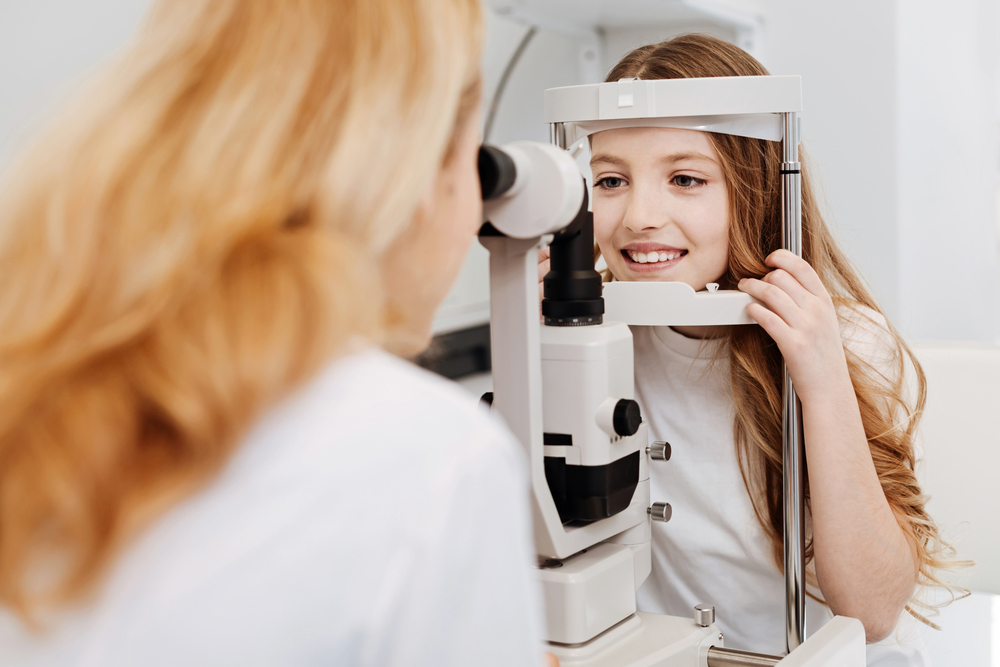
Myopia is the most common ophthalmic condition in the world, and it is estimated that almost 23% of the world’s population have the condition. It often begins in childhood, with research suggesting that there are over 80 million children worldwide who are considered to have myopia.
The number of children being diagnosed with myopia also seems to be increasing – something which is believed to be the result of a number of factors, including more time spent indoors and increased viewing of digital devices. If your child is diagnosed with myopia, there are treatments that can help them to continue to see clearly, achieve their potential at school and enjoy living life to the fullest.
What is Myopia?
Also known as nearsightedness, myopia is characterized by the ability to see nearby objects clearly while those that are at a distance appear blurred. It is a refractive error, which means it’s caused by problems with the way that light is refracted by the eyes.
Refraction is caused by the cornea, which is the clear, domed lens covering the front part of the eye. In someone with clear vision, the light is refracted so that it passes through the eyes and is focused fully onto the retina, which is the patch of light-sensitive cells found at the back of the eye. In children and adults with myopia, the cornea refracts the light in such a way that it is the focus in front of the retina instead. This means that the message sent from the retina to the brain isn’t quite right, causing our brain to interpret the images we see as blurred.
Signs Your Child May Have Myopia
Children aren’t always able to communicate as effectively as adults are, and this can make it difficult to know if your child is experiencing problems with their vision, including myopia. However, there are some signs of myopia that parents should be aware of. These include:
Sitting at the front of the classroom/struggling to see if the board if they are nearer the back
Sitting very close to a television screen
Having difficulties with sports that require good distance vision, such as baseball, ice hockey, and archery
Squinting and frowning
Frequent headaches
Eye fatigue
Holding books or other reading material close to their face
Lack of concentration
Actively avoiding reading
How is Myopia Diagnosed?
Myopia can only be diagnosed by your eye doctor and involves just a simple, non-invasive test. During this test, your child will be asked to look at different letters or numbers on a chart placed a short distance away and asked to read them or sound them out phonetically depending on their age and ability. How accurately they can see each of the charts presented will determine how clearly they can see at different distances and will be used to establish their prescription for corrective lenses (if they are required).
Myopia testing is often carried out alongside other general evaluations of the health and condition of your child’s eyes to ensure that there are no other issues that could be affecting their vision. This could include shining a light into their eyes to look inside them, asking them to follow a moving object with their eyes to see how well they work together and even measuring the pressure inside their eyes.
Treatment for Myopia
If your child is diagnosed with myopia, they will be offered corrective lenses to enable them to see clearly. These can be placed into glasses frames, or if your child is mature enough, they may be able to choose to have contact lenses instead.
Your eye doctor may also want to talk to you about myopia management. This is where treatment is carried out to prevent your child’s vision from getting any worse and can help to prevent high myopia in the future. This is important since high levels of myopia have been linked to vision problems including glaucoma and retinal detachment, which could have serious and even permanent consequences for your child’s vision.
For more information about childhood myopia, visit Alta Loma Optometric in Rancho Cucamonga, California. Call (909) 787-1760 to schedule an appointment.








